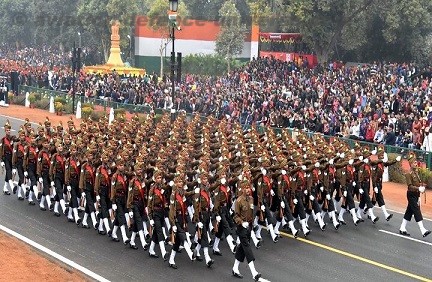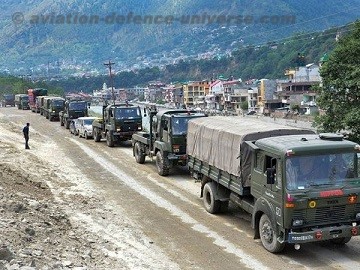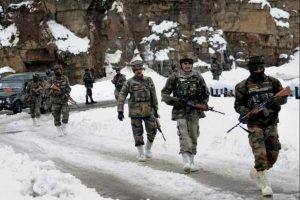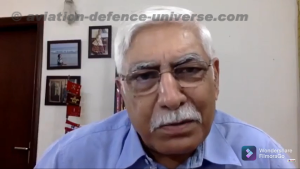By Lt Gen Vinod Bhatia, PVSM, AVSM, SM (Retd)
New Delhi. 27 October 2021. The Indian Infantry celebrates the 75th Infantry Day on 27 October 2021, to commemorate the airlift and joining the battle by 2 Sikh in Srinagar in 1947. It has been reported that the Army and the Airfiorce will reenact the landings on the 27th October this year to honour the infantry and 75 years of the 1947 war.

The Indian Infantry is by far the most battle hardened and combat rich force in the world, having proved its effectiveness across the full spectrum of conflict over the years ensuring the nations territorial integrity and sovereignty. The made in China COVID 19 has been the biggest disrupter of the century. As the nation crosses the 100 crore mark in vaccination, the precautions continue and rightly so, forcing low key celebrations of the Infantry DAY for the second consecutive year. It is imperative to pay a tribute to the Infantryman who guards our frontiers in one of the most hostile and challenging conditions anywhere in the world, with little thought to his own security. The driving force is the ‘ NAM NAMAK NISHAN’ of his battalion , regiment, the Indian Army and the nation.
India’s contested borders include a 126.1 Km of the Actual ground position Line (AGPL) along the Siachen Glacier, a 742 Km long Line of Control in the West and a 3488 km long India – China border, wherein the Indian Army demonstrates a resolute response to China’s aggressive behaviour along the LAC, with the Infantry leading. In addition a fairly large component of the Infantry is also continuously deployed in counter terrorist operations in Jammu and Kashmir and the North East. It is well recognised that the Indian soldier ‘ COSTS THE LEAST BUT DELIVERS THE MAXIMUM’. The key question however remains ‘ Is the infantry soldier optimally equipped?’ The definite answer is No. The equipping and arming of the infantry soldier also directly impacts the equipping of all soldiers, sailors and air warriors of the world’s fourth largest armed forces and the largest volunteer army and Infantry. With over 380 battalions, the infantry comprises nearly 38% of the 1.25 million armed forces. Optimally equipping and arming the infantry will also directly contribute to a better equipped Central Armed Police Force whose strength is slowly equalling that of the army.

The key security challenge for India is to deter China’s aggressive behaviour along the LAC, for which India will have to ensure an effective defence of the LAC as both Indian army and the PLA are in for the long haul. India needs a 3D strategy against China – Defend the LAC, Dominate the Ocean, and Deter China by “Bind to Balance’ with nations having convergence and congruence of interests. Indian armed forces will also need to build capabilities and enhance capacities to meet and mitigate a two front collaborative threat from China and Pakistan. Despite the fragile ceasefire along the LoC, the infantry will also need to ensure a more dynamic and effective Pakistan strategy based on 3 Ps – Proactive, Pre-emptive and Punitive operations, in light of the emerging volatile situation in Afghanistan. Optimal arming of the infantry hence is imperative to ensure an effective territorial integrity and security.
Unfortunately though, the mainstay assault rifle of the soldier continues to be the 5.56 mm INSAS Rifle, a piece of metal not trusted by the soldier. A good design but a poor product. The infantry’s quest for modernisation has been frustrating as it seeks to enhance lethality with light weight, fully loaded, accurate weapon systems, better communication and surveillance equipment, battlefield mobility including all terrain vehicles, body armour, and a plethora of items to equip the soldier from ‘ Head to Heel’ to ensure agility and protection. For long the procurement process and procedures have been lethargic and lengthy denying the soldier the means to fight effectively and survive. The Indian Army has an urgent demand for nearly 9.5 lakh assault rifles, 4.65 lakh carbines, 57,000 light machine guns (LMGs), and around 5,300 sniper rifles, mostly for the 380 Infantry and 63 Rashtriya Rifles battalions. Despite the increased deployment the Infantry has not seen any worthwhile modernisation, however with the emerging security situation and threat scenario, an urgent and focussed impetus has been accorded by the government by fast tracking the procedures. The long awaited Russian AK 203 is likely to be inducted soon, with Russia agreeing to waive a royalty clause to facilitate transfer of technology. 6,77,427 AK 203 assault rifles will be manufactured in the Amethi factory, in the initial phase. The Rs 5,124 crore contract is likely to be inked in the coming months, with production expected to commence next year. The delay in the deal however led to Infantry acquiring an additional 72,400 SIG716 assault rifles from the United States at a cost of 700 crore INR, under the Fast-Track Procurement (FTP) procedure, in view of increasing tensions along the Line of Control (LoC), in 2019. The Navi Mumbai based Indian company IdeaForge will manufacture the SWITCH unmanned aerial vehicle (UAV). The 140 crore deal will meet part of the requirement of tactical drones for the infantry troops deployed in high-altitude areas like Ladakh. Another major development is the approval of the Bulletproof jacket developed by Major Anoop Mishra, which has been found successful and will be manufactured by the private sector.

16,479 IWI (Israel) Negev NG7 Light Machine Gun (7.62 x 51mm) are under procurement at a cost of INR 880 crores. The ever reliable 7.62 Dragunov Sniper rifle is likely to be upgraded by SSS Defence India or Kalashnikov( Russia). A much needed carbine for the infantry is in limbo since 2018 with an order worth 110 million USD for 93,895 CAR 816 (5.56X45mm) Caracal carbines from UAE, under FTP. However, among carbines, there are also two indigenous options: the Joint Venture Protective Carbine (JVPC), a collaborative effort between the Defence Research and Development Organisation (DRDO) and the Ordnance Factory Board (OFB); and Asmi, a 9 mm submachine gun designed and produced by Lt. Colonel Prasad Bansod of the Army’s Infantry School.
For PARA and PARA SF 1400 SCAR(L) assault rifles (5.56 X 45 mm), 1050 SCAR (H) battle rifle (7.62 X 51mm) are under procurement from FN America (US) under Foreign Military sales (FMS). In addition 100 X M107A 1 sniper Rifles .50 calibre Barret firearms Co. US and 110 X .50 Calibre Browning Heavy Machine Guns are in the pipeline with contracts having been inked. There is demand for Man Carrying Parachutes, Supply drop Paras as also Heavy drop Parachutes for guns and heavy vehicles.
These are the basic personal weapons for a soldier which are an appendage to his body as he lives, breathes, sleeps and fights with these weapons. The infantry modernisation aims to make the burden on the infantryman lighter by procuring lighter personal kit, ballistic helmets with communication facilities as also lighter weapons and body armour (bullet proof jackets), Battlefield Management Systems (BMS) etc. – The BMS is aimed to integrate infantry units with armoured, artillery and Engineers into a digital network that will link together all components of the future battlefield. This will will facilitate senior commanders to know the exact location of every soldier and weapon with whom commanders can exchange reports, photos, data as also verbal and written communications
Atmanirbharta (self-reliance) in defence manufacturing and the ‘Make in India’ initiative will guide future acquisitions, however, given certain emergent requirements the infantry may have to look at foriegn manufacturers for some military hardware, as make in India firms up and the corporatization of OFB takes shape with Private defence industry giving the requisite push.
Infantry, the sword arm needs optimal arming and equipping to fight effectively at minimum costs. Irrespective of multi domain warfare and the changing nature of future battlefields, infantry will continue to decide the outcomes especially so in the Indian context. The National War Memorial in New Delhi is testimony to the many sacrifices of the Indian soldier. Of the nearly 25,500 tablets honouring the soldiers who made the supreme sacrifice in defending our nation, nearly 90% are those of infantrymen. It is a national duty and commitment to ensure that the soldier has the requisite wherewithal to fight effectively and safely. A salute to all Infantrymen on the occasion of the Infantry Day.
(Lt. Gen Vinod Bhatia (Retd.) is former DG Infantry & Director General of Military Operations(DGMO) Indian Army. The views in the article are solely the author’s. He can be contacted at editor.adu@gmail.com)

























































































































